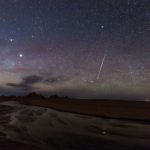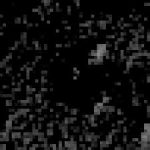Comet captured streaking across Stonehenge night sky0
- From Around the Web, Space
- July 14, 2020
A comet has been captured on camera streaking across the skies over Stonehenge.

A comet has been captured on camera streaking across the skies over Stonehenge.

A comet named C/2020 is expected to be visible from Earth at various points throughout July.

Warning: This story may give you a sense of déjà vu.

For years, amateur astronomers have been waiting for a bright, naked-eye comet to pass by Earth — and finally, such an object may have arrived.

A review of data taken over the course of the two-year Rosetta mission shows that comet 67P/Churyumov-Gerasimenko was sometimes reddish in appearance, while at other times it assumed a bluish hue. Sounds weird, but scientists have come up with a sensible explanation that doesn’t involve aliens with paint guns.

Interstellar comet 2I — Borisov swings past sun

Stars and comets make unlikely dance partners. Their gravitational partnership is one that astronomers have long suspected but have never seen — until now. For the first time, a Polish group has identified two nearby stars that seem to have plucked up their icy partners, swinging them into orbits around our sun.

Using data from NASA’s Transiting Exoplanet Survey Satellite (TESS), astronomers at the University of Maryland (UMD), in College Park, Maryland, have captured a clear start-to-finish image sequence of an explosive emission of dust, ice and gases during the close approach of comet 46P/Wirtanen in late 2018. This is the most complete and detailed observation to date of the formation and dissipation of a naturally-occurring comet outburst. The team members reported their results in the November 22 issue of The Astrophysical Journal Letters.

Wednesday, October 16th 2019, 5:00 pm – Hubble zooms in on our latest intersellar visitor

The first-ever comet from beyond our solar system, as imaged by the Gemini Observatory. The image of the newly discovered object, named 2I/Borisov, was taken on the night of Sept. 9-10, 2019 using the Gemini Multi-Object Spectrograph on the Gemini North Telescope from Hawaii’s Mauna Kea



